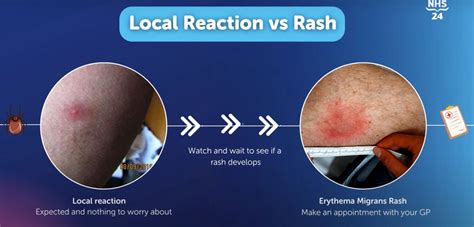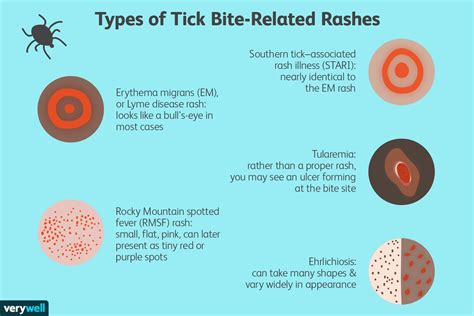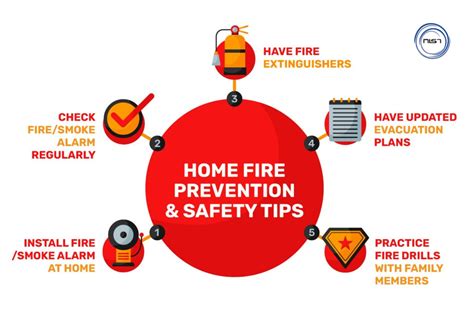Intro
Learn about tick bite reactions, symptoms, and treatments. Understand Lyme disease, tick paralysis, and allergic reactions to tick bites, and how to prevent them with tick control and removal methods.
Tick bites can be a significant concern for individuals who spend time outdoors, particularly during the warmer months when ticks are most active. While most tick bites are harmless, some can transmit diseases such as Lyme disease, Rocky Mountain spotted fever, and Southern tick-associated rash illness. Understanding tick bite reactions is essential to promptly identify and treat any potential health issues. In this article, we will delve into the world of tick bites, exploring the different types of reactions, their causes, and the necessary steps to take if you suspect you have been bitten by a tick.
Tick bites can cause a range of reactions, from mild to severe. Some people may not even notice they have been bitten, while others may experience noticeable symptoms such as redness, swelling, and itching around the bite area. In some cases, tick bites can lead to more severe reactions, including fever, headache, and fatigue. It is crucial to recognize the signs and symptoms of a tick bite reaction to seek medical attention if necessary.
The importance of understanding tick bite reactions cannot be overstated. With the rising incidence of tick-borne illnesses, it is essential to take preventive measures to avoid tick bites and to know how to respond if you are bitten. By educating yourself on the different types of tick bite reactions, you can reduce your risk of developing a tick-borne illness and ensure prompt treatment if you experience any symptoms.
Tick Bite Reactions: An Overview

Tick bite reactions can be categorized into several types, including local reactions, systemic reactions, and allergic reactions. Local reactions occur at the site of the bite and can cause redness, swelling, and itching. Systemic reactions, on the other hand, affect the entire body and can cause symptoms such as fever, headache, and fatigue. Allergic reactions are rare but can be severe, causing anaphylaxis, a life-threatening condition that requires immediate medical attention.
Local Reactions
Local reactions are the most common type of tick bite reaction. They occur when the tick's saliva triggers an immune response, leading to inflammation and swelling at the bite site. Local reactions can cause a range of symptoms, including redness, itching, and swelling. In some cases, a small blister or rash may develop at the bite site.Causes of Tick Bite Reactions

Tick bite reactions are caused by the tick's saliva, which contains proteins and other compounds that can trigger an immune response. When a tick bites, it injects its saliva into the wound, causing an inflammatory response. The severity of the reaction depends on various factors, including the type of tick, the individual's immune response, and the presence of any underlying medical conditions.
Types of Ticks
There are several types of ticks that can transmit diseases, including the blacklegged tick, the lone star tick, and the American dog tick. Each type of tick has a unique set of characteristics and can cause different types of reactions. Understanding the different types of ticks and their habits can help you reduce your risk of being bitten.Symptoms of Tick Bite Reactions

The symptoms of tick bite reactions can vary depending on the type of reaction and the individual's immune response. Common symptoms include:
- Redness and swelling at the bite site
- Itching and burning sensations
- Fever and headache
- Fatigue and muscle aches
- Rash or blister at the bite site
In severe cases, tick bite reactions can cause more serious symptoms, such as:
- Anaphylaxis, a life-threatening allergic reaction
- Tick paralysis, a rare condition that can cause muscle weakness and paralysis
- Southern tick-associated rash illness, a condition that causes a rash and fever
Diagnosis and Treatment
Diagnosing tick bite reactions can be challenging, as the symptoms can be similar to those of other conditions. A healthcare professional will typically perform a physical examination and take a medical history to determine the cause of the symptoms. In some cases, laboratory tests may be necessary to confirm the diagnosis.Treatment for tick bite reactions depends on the severity of the symptoms and the type of reaction. Mild reactions can be treated with over-the-counter medications, such as antihistamines and pain relievers. More severe reactions may require prescription medications, such as antibiotics and corticosteroids.
Prevention and Protection

Preventing tick bites is the best way to reduce your risk of developing a tick-borne illness. There are several steps you can take to protect yourself, including:
- Wearing protective clothing, such as long-sleeved shirts and pants
- Using insect repellents, such as DEET and picaridin
- Avoiding tick habitats, such as wooded and grassy areas
- Conducting regular tick checks, particularly after spending time outdoors
Tick Removal
If you find a tick attached to your skin, it is essential to remove it promptly and correctly. Use fine-tipped tweezers to grasp the tick as close to the skin as possible, and pull upwards with steady, even pressure. Avoid using home remedies, such as petroleum jelly or heat, as these can cause the tick to release more saliva and increase the risk of transmission.Conclusion and Next Steps

In conclusion, understanding tick bite reactions is crucial to reducing your risk of developing a tick-borne illness. By recognizing the signs and symptoms of tick bite reactions, taking preventive measures, and seeking medical attention if necessary, you can protect yourself and your loved ones from the risks associated with tick bites. If you have any concerns or questions about tick bite reactions, consult with a healthcare professional for personalized advice and guidance.
We encourage you to share your thoughts and experiences with tick bite reactions in the comments section below. Have you or someone you know been affected by a tick-borne illness? What steps do you take to protect yourself from tick bites? Your feedback and insights can help others stay safe and informed.
What are the most common symptoms of tick bite reactions?
+The most common symptoms of tick bite reactions include redness and swelling at the bite site, itching and burning sensations, fever, and headache. In severe cases, tick bite reactions can cause more serious symptoms, such as anaphylaxis and tick paralysis.
How can I prevent tick bites?
+Preventing tick bites involves taking several steps, including wearing protective clothing, using insect repellents, avoiding tick habitats, and conducting regular tick checks. It is also essential to remove any attached ticks promptly and correctly.
What should I do if I find a tick attached to my skin?
+If you find a tick attached to your skin, it is essential to remove it promptly and correctly. Use fine-tipped tweezers to grasp the tick as close to the skin as possible, and pull upwards with steady, even pressure. Avoid using home remedies, such as petroleum jelly or heat, as these can cause the tick to release more saliva and increase the risk of transmission.
